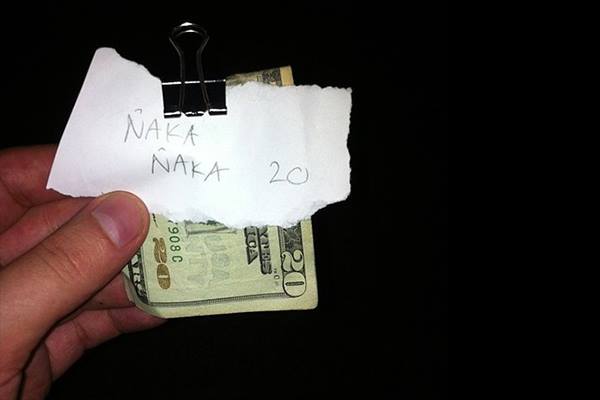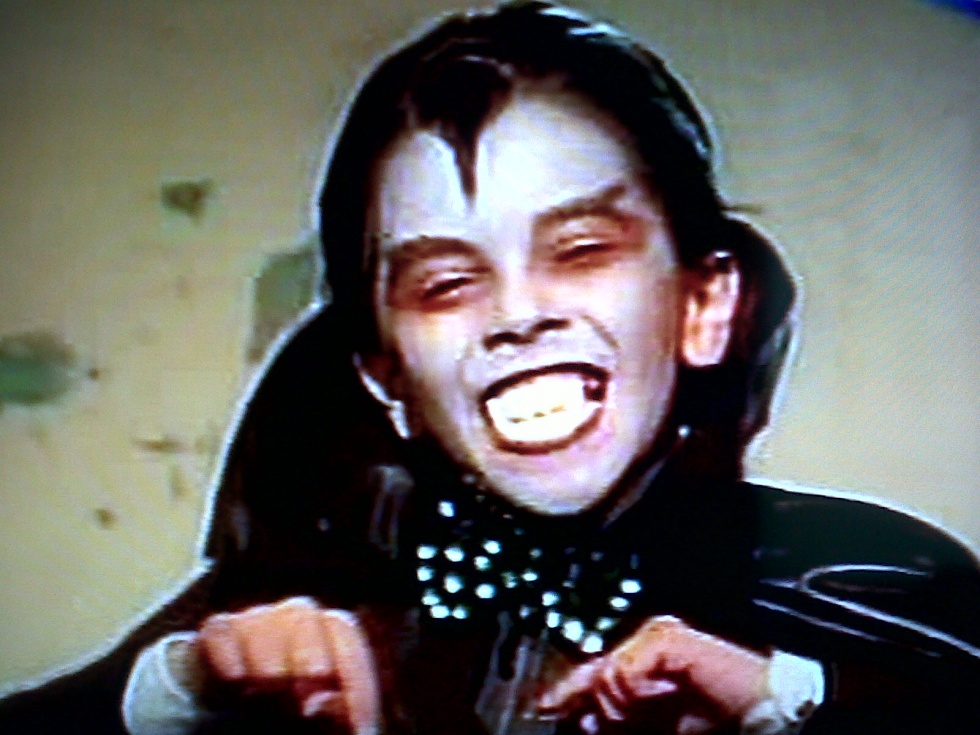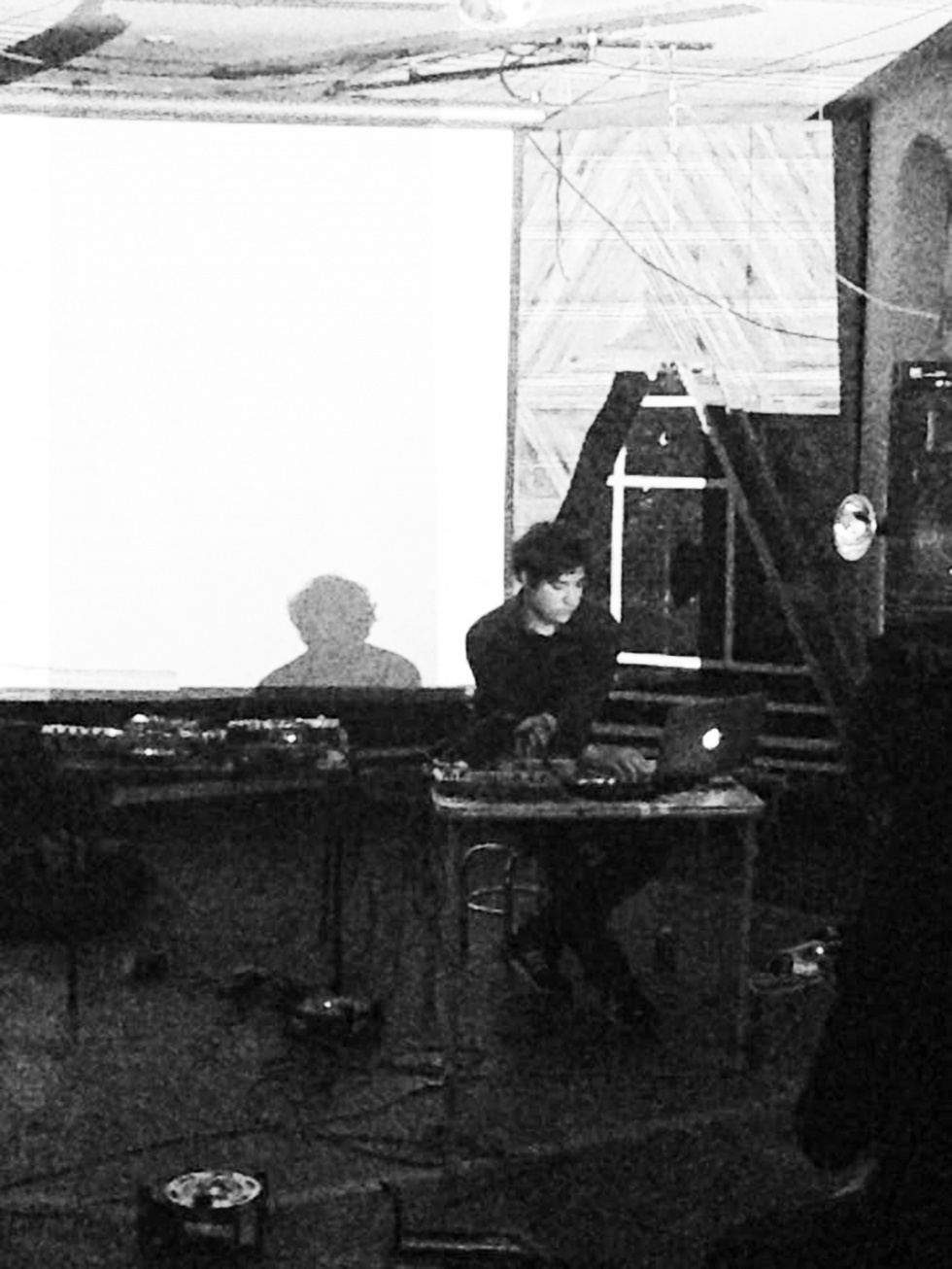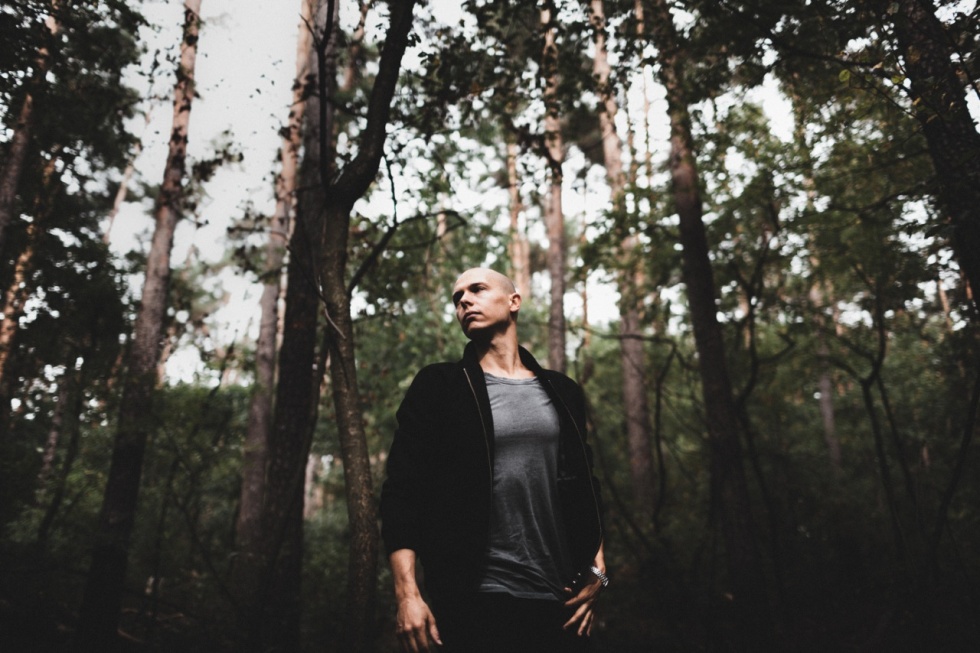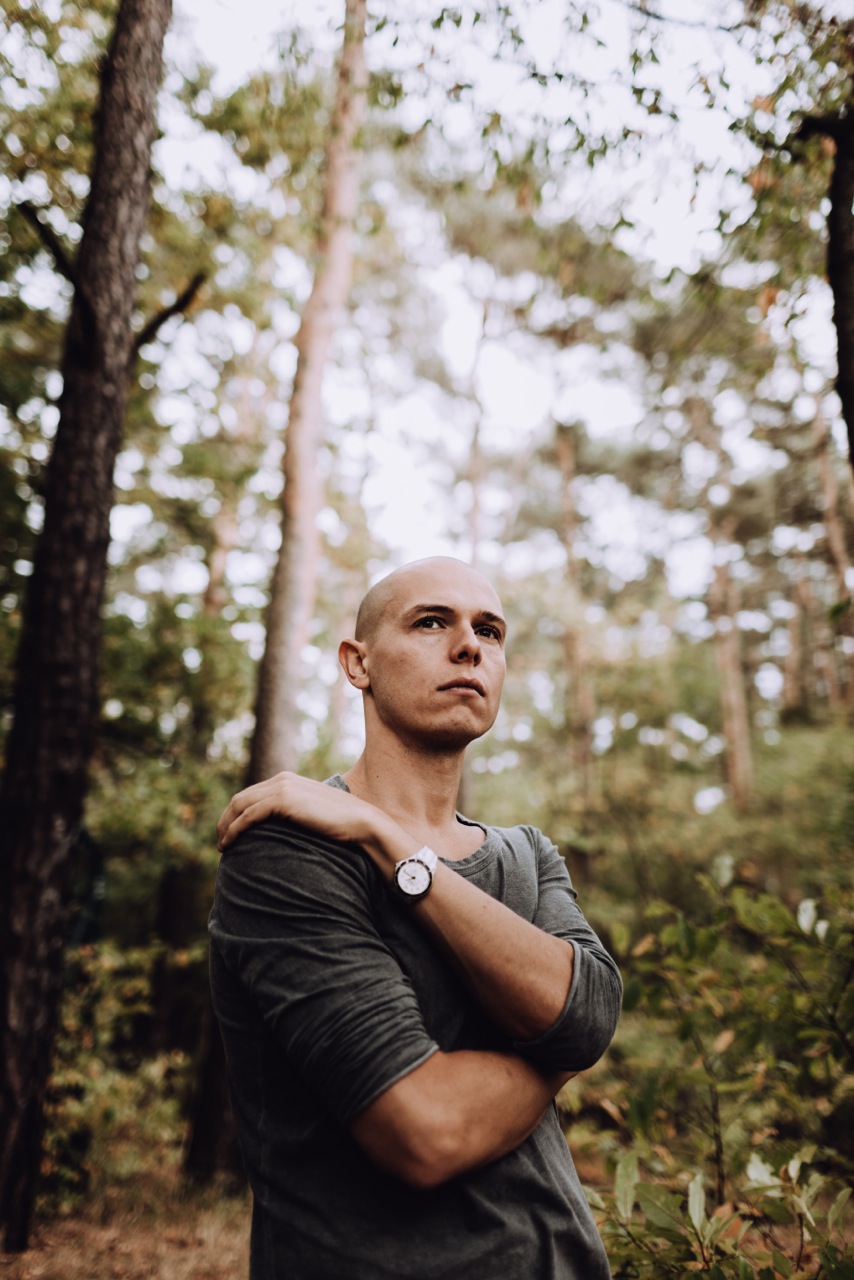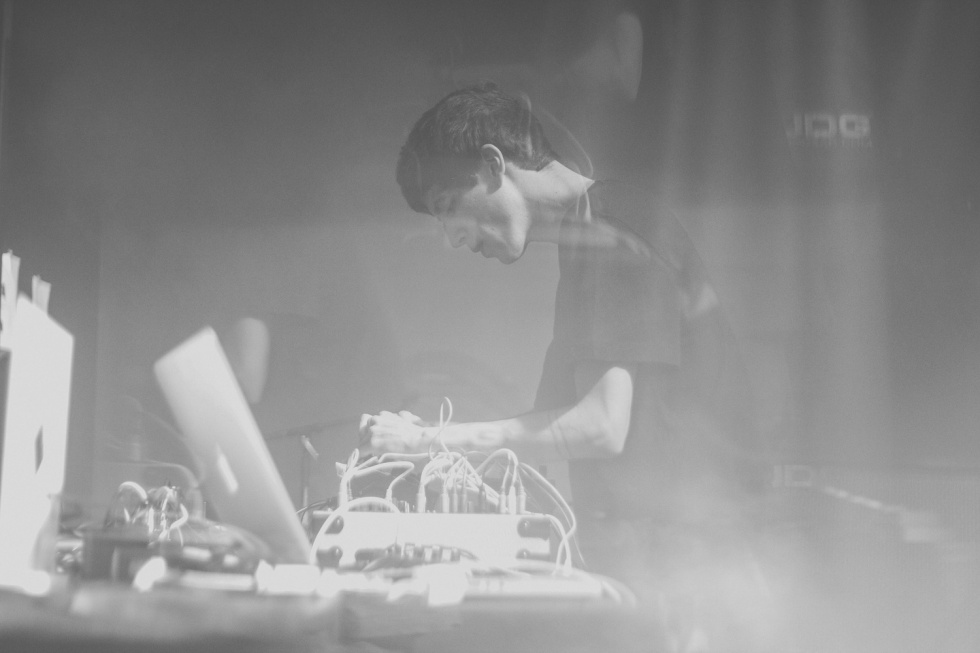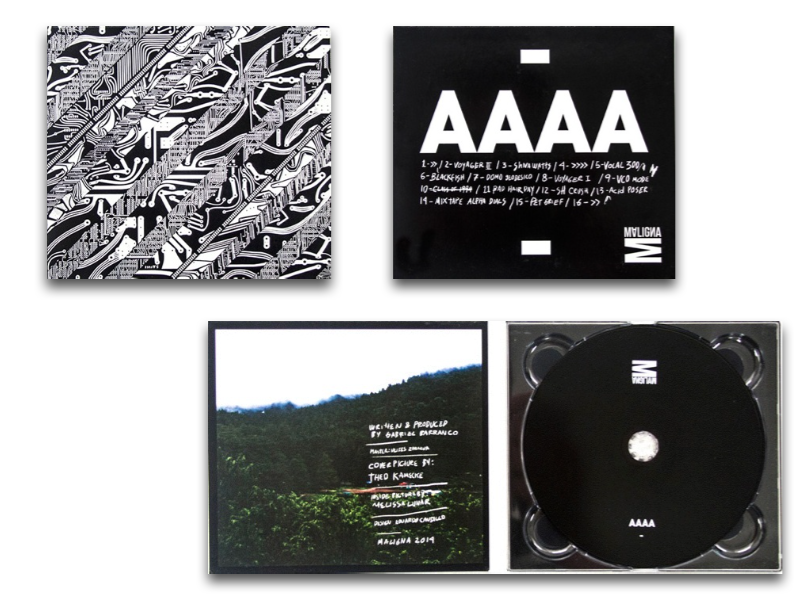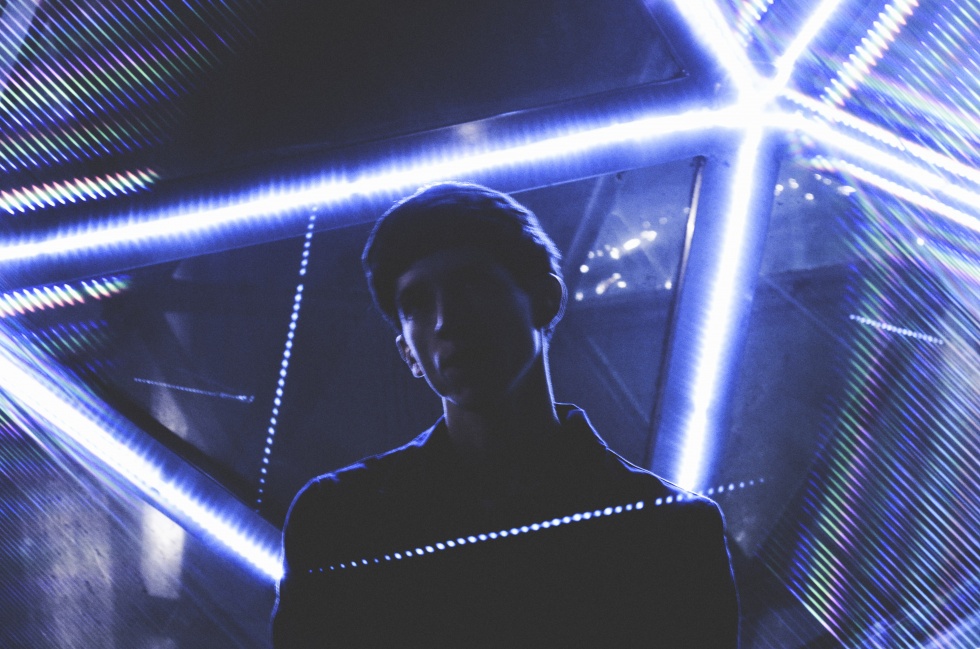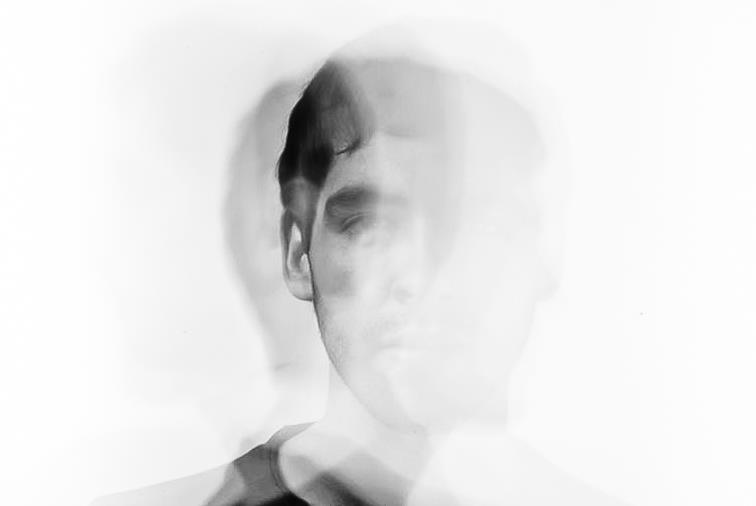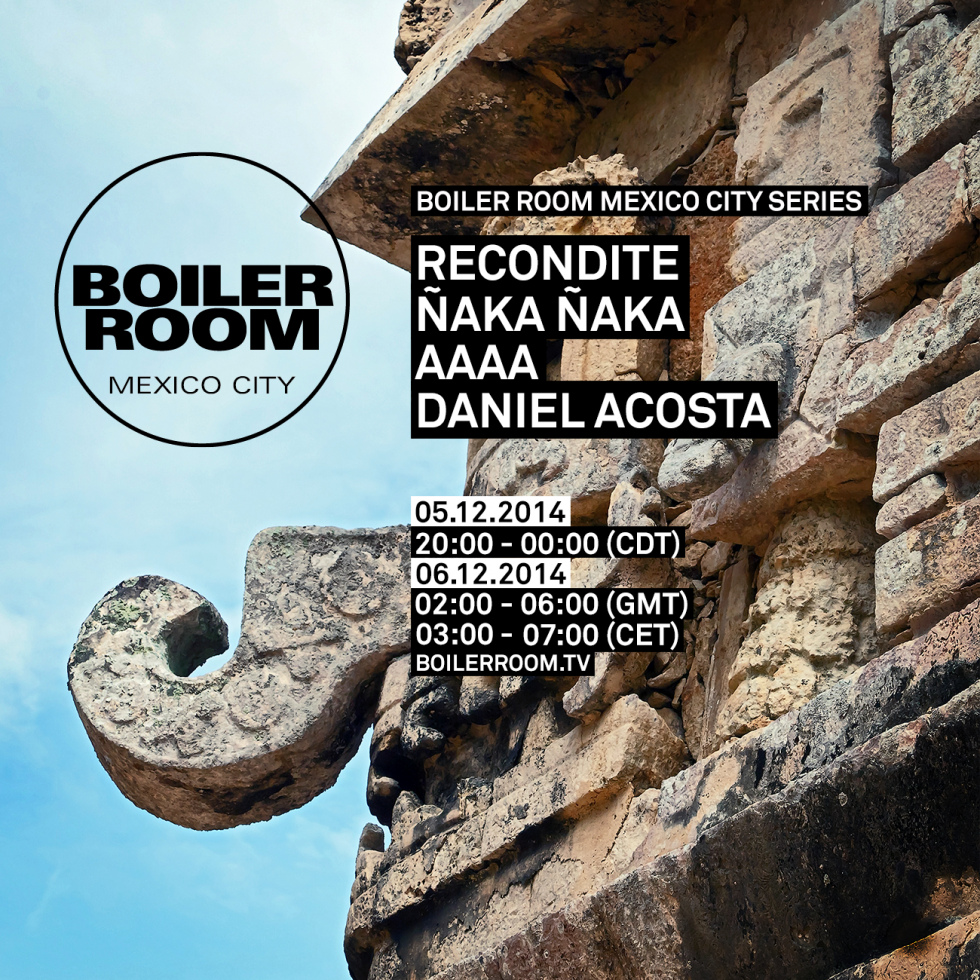
It is no secret what news outputs and media have painted throughout the country’s recent politically turbulent years, while music struggles to stand in place between countless limitations imposed by media/political monopolies as a result of over 100 years of these informally governing the country. Mexico’s revolting actions to express extreme discontentment have also translated into an artistic revolution. It is important to emphasize that in Mexico City, a metropolis home to more than 20 million inhabitants with a never ending coalesce of musical culture and celebration, music has always cut through the mist serving as loyal cultural thermometer that has a lot to offer to the global spectrum. Mexico is nothing short of a nest of pure vanguard; our first edition of the Mexico City Series lives up as proof.
Following an up-tempo driven broadcast featuring Rubinskee and the Icelandic art-techno vikings of GusGus, we head back to Mexico in order to continue to share the country’s best kept secrets and underground virtuosos in the great new Aztec-founded Tenochtitlan. It is indispensable to showcase another shade of the country’s colours by shining a light on the “yang” side of Mexico City with a repertoire of artists aligned for our sophomore edition of the series: Opal Tapes’ very own ÑAKA ÑAKA swanking his out-of-the-oven Mundo Harsh release, soulful techno crafter Recondite presenting his recent Innervisions-pressed Iffy album, synthesizer guru AAAA, and local ghost gem Daniel Acosta.
ÑAKA ÑAKA has become one of Mexico’s best known international exports releasing dark Latin-tinted techno via cassette. He currently resides in New York City, creating a bridge between Mexico and the world by showcasing his abstract-take on techno in foreign lands. As a hardware aided live performer, he oscillates between live noise improvisation and software programming; which without a doubt breaks the conventional line of electronic performances. His most recent release entitled Mundo Harsh is a bizarre take on hiss-textured techno that could easily fit on a Mexican vampire’s DJ set at an abandoned warehouse in Mexico City with a twist of humorous Spanglish in the title rounds things off to successfully embody his signature style.
Ñaka Ñaka took the time to answer some questions regarding his mysterious whereabouts and other miscellanies.
BR LATAM: “Ñaka Ñaka” is an expression that got popularized in the 80s because of a famous TV show called Chiquilladas, where a kid called the ‘chiquidracula’ (Mexican slang for little vampire) used that phrase when he was planning a mischief or evil tactic. Nowadays, children in Mexico use it in a mocking connotation. Why did you decide to name your project after that? It’s a genius name by the way.
ÑAKA ÑAKA: Jej, thanks. Yeah, I guess I’ve stuck with Ñaka Ñaka because it’s somewhat humorous. My music can get a little dense so I like that name because it somehow counteracts that. I also get a kick seeing how non-Spanish speaking blogs deal with the whole “ñ” situation.
BR: What is the story behind you moving to New York City and how did it influence the music you produce and play?
Ñ: I felt I needed to be exposed to more music. I’ve been going to a lot of shows; electronic, noise, classical and I enjoy witnessing how other performers approach music and structure a live performance. I guess that makes me question how I approach my music/live sets.
BR: Where do artist of your macabre-dyed techno genre stand in such competitive niches like the one in New York City?
Ñ: Yeah, to be honest I’m not sure I can relate much to the dark ‘blackest ever black’ style techno world. I’ve had the opportunity to play all sorts of shows, but where I am most comfortable playing is when friends invite me to play a more diverse experimental bill; where not all the acts are necessarily playing beat driven electronics.
BR: How different are the opportunities for your live shows since you’ve moved?
Ñ: Similar. Luckily through my music, in both Mexico City and New York, I’ve managed to meet and befriend people who are doing very interesting things and this has naturally opened up opportunities to perform live shows. I try not to play live so frequently. I like laying low from time to time to focus on recording stuff because I basically have to pack all my studio in a bag to perform these shows. So, it’s either one or the other.
BR: What are the challenges of retaining a Mexican influence in your music after moving to US and your Opal Tapes-assisted breakout last year?
Ñ: I see none. Then again, I’m not directly referencing traditional Mexican music with what I do. I guess my affinity and influence from Mexico comes in a more abstract/spatial sense.
BR: How different is your current audience’s perception and acceptance of your music from the one in Mexico?
Ñ: I think that geography doesn’t play a role in this; it’s more of a gig to gig thing. Some audiences are more receptive than others and there are a lot of factors that play in (not only musically), which can alter the perception as an audience member.
“I guess my affinity and influence from Mexico comes in a more abstract/spatial sense.”
BR: How are Mexican artists living in big US cities handling the sociopolitical crisis that Mexico has been living through the past months?
I think it’s difficult to grasp what’s going on exactly. All I see right now is what my friends post on my feed… which in a way, is worse I think.
BR: Do you have anything special or evil prepared for your live show in BR at Mexico City?
Ñ: Maybe… Nothing evil tho’.
Lorenz Brunner, AKA Recondite, has been around the radar for not that long – launching his debut Plangent series in 2011, yet his achievements such as his recently Innervisions-pressed album entitled Iffy prove his devotion to detail-frenzied production techniques landing him a very special spot inside the record bags of the most exigent techno enthusiasts. Not only has this Bavarian mastermind founded his very own Plangent Records imprint and released music through some of the most esteemed labels like Dystopian, Acid Test, Ghostly International, and Hotflush Recordings, but he has also been successfully breaking the paradigm for four-on-the-floor oriented long-play format albums. It seems that his artist name, that uses a word to describe something unknown or esoteric, is progressively becoming ironic, because it is safe to say Recondite has become one of the key exponents of carefully crafted, soulful techno.
Recondite swooped in some time for a brief Q&A regarding Iffy.
BR LATAM: How did this record come about with Innervisions and why did you decide to compile these ten tracks specifically?
Recondite: Ever since I stated playing more often with Dixon and Âme we kind of became friends. We met in Berlin for dinner and I started to share some of my unreleased work with them. I think when I gave “Levo” to Dixon that was the starting point. That was in March this year. At this stage, I was already working on “Buteo” and “Baro” so we thought about an EP first, but I kept on working on new tracks, so “Tame”, “Garbo”, and “Duolo” came to life in the spring/summer. I always like to include one or two non-4/4 tracks on an album, so “Jim Jams” and “Steady” were a perfect match even if I did them earlier than the others. “Glint” is also from last year. “Konter” was the latest addition to the LP as I only started and finished it 3 days before mastering. I did that after coming home from a gig where I felt like people did not really understand me. It was a big outside event on a Sunday evening in a park. My set had the last sunshine of the evening before a thunderstorm came and I played a nice melodic, deep, and groovy set, but for some reason I think most of the people in the crowd expected something really hard and banging. The German word konter means something like ‘counter attack’. So this track delivers exactly the vibe I was in on that evening – the vibe the people did not understand so I felt like this deserved a track.
The artwork for the release somehow portrays a very bizarre shade of aggression. What is the story behind it?
R: Yes, aggression is part of the expression on the dogs face on the cover, but not only that – as you said it feels bizarre. What is bizarre? Something weird or undefinable? Why does the cover feel like that? Well, the two faced expression of the dog is also uncertain – undefinable. The dog is obviously torn between fear, grit, defense and attack. The cover is very dark, but also pink so contrasts and counterparts are playing a big role. Being uncertain, undefined and therefore in consideration of many possible solutions is a state of mind I really can relate to. The adjectives ‘recondite’ and ‘iffy’ share a similar message when you think about it. This time I chose a visual expression of a certain emotional mind state rather than just an aesthetically beautiful black and white picture with no actual meaning too it. I did that before.
“For me, electronic music is not live at all… I don’t jam at home, so how could I do it on stage?”
BR: Your last LP Hinterlands features an odyssey of pad-like soundscapes and an overall reverberated and spacey essences, yet Iffy in a way roots for a deeper raw aesthetic of dry drum machine sounds and synthesizers with a slightly darker and mysterious feel. What specific sound or mood where you looking for this release?
R: Actually, I was not looking for any sound. I never sit down to make music in order to be looking for something. This basically just means that I never make music by intension or with a plan. Certainly your reception is true. One thing I can say is that the reverberated pad heavy sound design does not really sound good in clubs, or lets say, the PA systems are not made or tweaked to display this kind of music how it should sound. So, obviously I have a lot more gigs nowadays and if I would say this is not influential I would be a liar. This is something I like though; staying open minded and allowing yourself to use your changes in life in order to get inspired and make the best out of it – which would be a display of my favourite emotions in a slightly different way.
BR: The aesthetics of techno since its conception have been catalogued as very percussive driven, with little to no focus on complex melodies/harmonies unlike most of your productions. Was it ever your intention to break this formula or was your sound naturally moulded into what Recondite is now from scratch?
R: If there is any intention in my music, then it is a certain urge to express my strongest feelings in a creative way (I chose music for some reason), without a plan or a formula. It just grew to what it is now and it is a pretty accurate display of my personality with all its shades but one certain ground colour tone. I never had a thought like – ‘this techno stuff is so sterile, formulaic, heartless and cold – somebody needs to change that.’
“being uncertain, undefined, and therefore in consideration of many possible solutions is a state of mind I really can relate to.”
BR: How do you decide the improvisation/human vs. programmed ratio on your live performances?
R: I would say it is a 75/25% measure. 75% would be programmed, as I mostly play my full tracks out how I made them while producing them. I don’t like tearing my tracks apart and trying to rearrange them with two hands in one take in a completely unfamiliar monitor setting during a performance situation. For me, electronic music is not live at all. I don’t jam at home, so how could I do it on stage? I just put emotions into music and that in the fastest, easiest and most direct way as possible. But I love to play out in front of a crowd as it is very interesting to see the reaction of the people to my decision of what tracks I chose for the particular night and how I present them to the, in what order, which tracks will be blended in together, etc. I have to say that I can do this only due to the fact that I can choose from a big pile of my tracks. So people will only hear my own productions and they will get an authentic musical experience.
Plus the gigs’ challenges will always be different. It starts with obvious size/stage/festival/club differences and ends with cultural differences. Being able to adapt to that, quick and with no stress (in my opinion a stressed out looking performer on stage is the worst), leaves room to add some live programmed percussion and samples like vocals from movies or field recordings. It’s fun!
BR: What can we expect from your live interpretation of the album at Boiler Room Mexico?
R: It will be an unplanned mix of released (mostly tracks taken of Iffy) and a few unreleased tracks and a little bit of improvisation.
Gabo Barranco is also known as AAAA, a Parisian born producer based in the Satélite suburbs of Mexico City. Barranco is an academic modular synth guru who carefully crafts and plays melodic acid post-techno productions with an arsenal of analogue gear. He has evolved to become one of the most dynamic live acts of the city, which has led him to land releases with local imprints like CVMR and Ritualz’s owned Maligna Records. It is safe to say he has a unique approach to creating complex soundscapes due to the fact that he is a trained musician/audio engineer and singer for the local post-rock band DDA. Influenced by shoegaze and other spacey and delay oriented genres, Barranco creates a unique palette of both sharp and melancholic sounds.
AAAA answered some questions for the team.
BR LATAM: AAAA is not the only musical project in you have taken part in. How different is the approach to creating and playing music with other people to having a project where you handle 100% of the creative scheme? What are the challenges?
AAAA: When someone works alone, the creative process depends on one’s self, just like the time you invest in it. I find it way easier doing it all by myself, since that way I do not have to mediate between the people involved to create tracks. However, when you create music with other people, you share what’s happening in that same moment, which in a way condensates. It is interesting because of the complicity of the process; it is a less engrossing experience.
BR: How do you perceive Mexico’s opportunities regarding experimental techno for live performances and finding local labels as an output for your music?
AAAA: I’m not really sure about a specific genre. In Mexico there is a field that has not been exploited to its full potential even though it is growing everyday. I believe there is still not a real feedback between the artists, labels/promoters, and the audience. Not so long ago, a very good DJ from Los Angeles (with an extensive trajectory) spent a few days in Mexico. He played 3 shows in the most active clubs of Mexico City, and his experience was not the best. There is a shortage of clubs for playing and listening. Maybe we need more risky places where the dance floor is not underestimated.
BR: You are known for your armed-to-the-teeth equipment packed performances. What technology do you rely on for playing live and producing? How does it differ?
AAAA: I use the same gear to produce and play. Modular analog synthesizers, drum machines, a mixer, effects, VSTs, a DAW and lots of cables. If I don’t bring something from the studio for a live performance is because the venue might have space restrictions or because the equipment I use is very old and might fail at a given point. There’s a lot of things that I cannot recreate live, those sections are sampled via Ableton Live. If I embody a new device, the configuration changes, which means my live act and production is in constant change.
Daniel Acosta is one of the undiscovered ghost entities. Acosta was born in Ciudad Juarez in Chihuahua, a city known for its high criminality and enduring techno. Nourished around the local Hardpop scene, his interest for audiovisual art and sound design flourished, bringing a unique technicality and spice to his techno and house oriented productions/DJ sets. His music collection and taste evolved to be hyped by the most exigent dance floors through the years. Acosta moved to Guadalajara eventually, a city full of folklore and for more than 9 years, he has been playing a key role curating events in the underground scene at both the tapatian capital and Mexico City.
Join us the 5th of December.
*This event is strictly invite-only. Watch the stream live here.*
